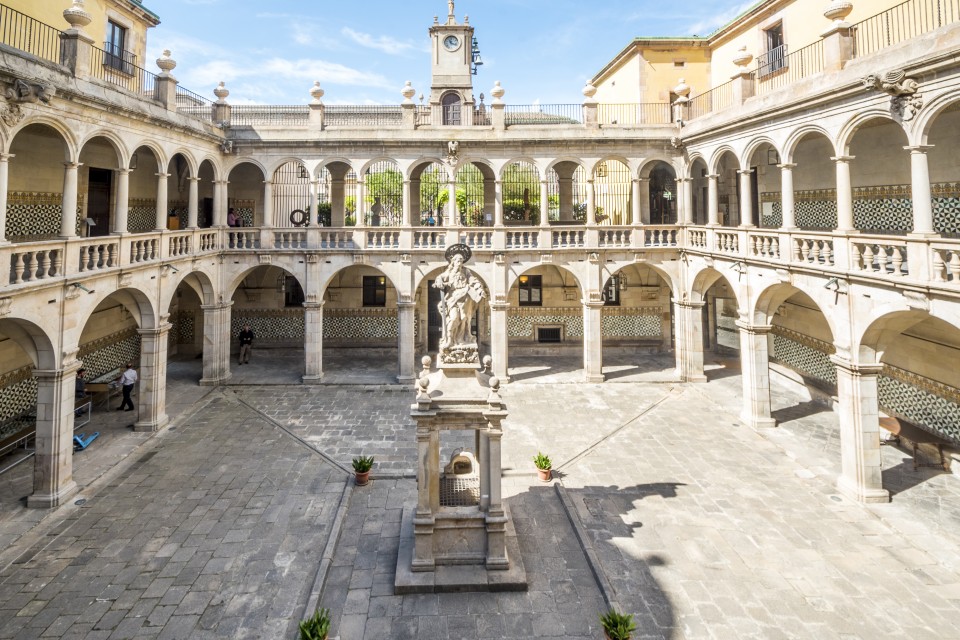Blog
Old House Of Convalescence
Lunes, 7 de october de 2019Guided tour Old House Of Convalescence
The Old Hospital of the Holy Cross was a necessity of the fifteenth century for all the citizens of Barcelona. The works began on February 1401 and ended on 1450, but it was not until the 17th century when the building was extended with the construction of the Convalescence House.
Why does this extension arise?
The need to have more space for the sick was an important concern, since once cured they did not leave completely recovered from the hospital, and sometimes, there were up to three patients in the same bed. This created a problem: it forced patients to be discharged very early and predisposed their disease relapse. As a consequence, it consumed the limited resources of the hospital because they had to re-enter the sick patients again.
Thus, the House of Convalescence worked as an independent establishment of the rest of the hospital, inaugurated during the feast of St. Paul in January 1680, it had two hundred iron beds and four hundred mattresses and paintings, and they gave meat and desserts to all those who could eat it. The institutional link between the House and the Hospital was always evident, so much so that, when the hospital moved to the current headquarters of the modernist building in the twentieth century, so does the House of Convalescence, in an independent building that sits next to the rest of pavilions of the current active Hospital.
In the seventeenth century one of the most prominent problems were resources and their financing. So, thanks to the charity and donations of “the Council of One Hundred”, of the “Diputación de Barcelona” and four noblemen of Barcelona: Pau Ferran, Lucrecia de Gualba, Victòria Astor, and Elena Soler it was possible the foundation of the House of Convalescence to the seventeenth century.
Once again, the effort of the citizens, of the nobility and royalty for their Hospital were shown, since a healthier and stronger population would be more productive and therefore give more wealth to the Crown.
The building began construction in 1629, but it did not end definitively until 1680 because of different setbacks such as pests, fires, lack of budget, etc. In 1921 it became the property of the City Council until in 1931 it became the seat of the current Institute of Catalan Studies (IEC).
But, in addition to all the historical anecdotes that are explained in the guided tours, the magic of this space is shown in its Baroque architecture with a masterpiece that is the chapel, apart from other rooms, but we can find the great artistic and architectural wealth of its interior.
-
CHRISTMAS BROADWAY
Concert dedicated to the greatest Broadway hits in their Christmas version
See more -
BLACK FRIDAY
10% discounts% all activities
See more -
STERNALIA'S DONATIONS TO THE ANIMAL SHELTER CENTRE D'ACOLLIDA D'ANIMALS DE COMPANYIA OF BARCELONA (CAACB)
OUR COMMITMENT AS A LOCAL COMPANY FOR THE IMPROVEMENT OF THE CITY.
See more -
ENJOY WHILE LERNING
Courses, theatre, sensory experimentation, historical recreation and music. A summary of our didactic proposal beyond the guided tours.
See more -
The women hidden behind the heritage spaces of Barcelona
It's no secret that history has traditionally been given male names to tell, leaving women in the background.
See more















.png)
.png)



![[...]](https://www.sternalia.com/xtra/imgs/loading.gif)